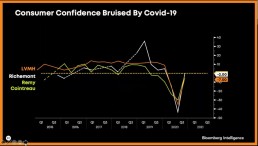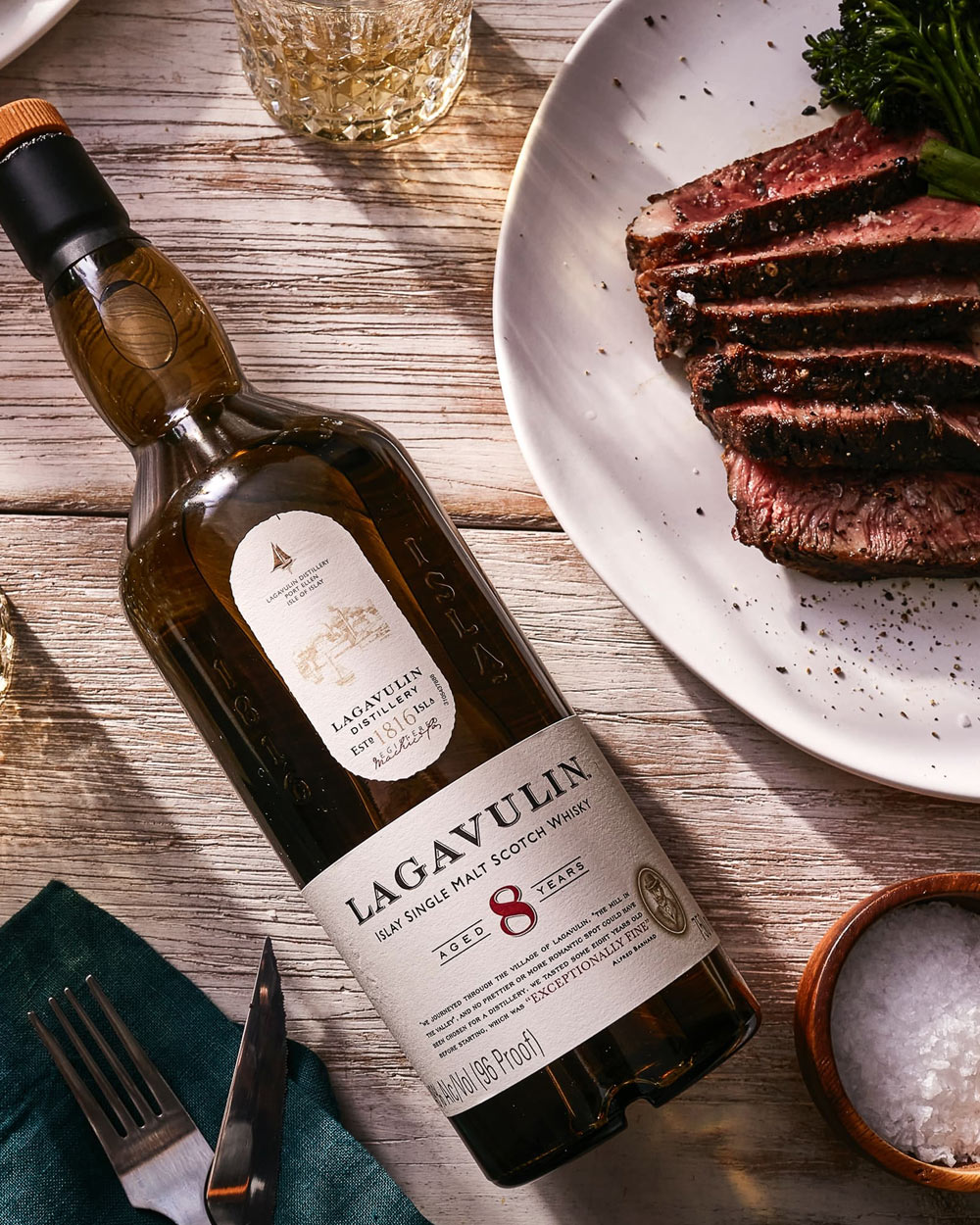In celebration of The Glenrothes Distillery’s release of their oldest and rarest whisky to date, a 50-year-old single malt scotch barreled in 1968, the fabled whiskey house assembled a panel of the world’s leading experts who explain how the collectible spirits market works.
Only fifty bottles of Glenrothes 50 Year-Old were made available globally, with a price tag on this rarest of liquids resting at $35,000. While most of us could never consider such a purchase, collectible super-luxury spirits, referred to as “investment grade” whisky in the business, has rather suddenly emerged as a major player on the auction markets. Rare whisky 101, which is considered the industry standard, reports the number of recorded bottles of Single Malt Scotch Whisky sold at auction in the UK in 2019 increased by 33.37% to 143,895 from the previous year.
Collectible whiskies are, simply put, those whose value is expected to rise over time, and these are based on two basic factors: rarity and quality. For example, many of the world’s most sought after bottles are those from “extinct,” meaning shuttered distilleries, like Diageo’s Brora and Port Ellen annual releases of delicious and finite bottlings. The most valuable collections range into the tens of millions, with the most in-demand stocks being predominantly Scotch and Japanese whiskies. But American, Irish, and world whiskies are beginning to popping up in significant collections. While collectible bottle flippers who are akin to ticket scalpers out for a quick buck stalk the periphery of the business, the vast majority of this whisky is purchased, traded, and drunk by passionate, well-heeled enthusiasts who love whisky and its surrounding community.
To flesh out how the collectible market works, these professionals offer insight into building a whisky collection for investment based on five factors: Research, retail sourcing, determining secondary-market prices, spirits auctions, and insuring a collection.
Step 1: Do Your Homework
Duncan Fox is an analyst with Bloomberg Intelligence, a broker for 26 years, starting in funds management, who understands how valuing companies can switch between long and short term investments. Today Fox applies his expertise to spirits investments by collecting data relevant in determining the value of a bottle to predict how these will perform from an investment angle. Here in 2020, Fox notes that while consumer confidence has been rattled by Covid-19, as markets continue to reopen, prices are rebounding.
“Analysis shows that consumer interest fell off a cliff in February and March,” says Fox. “This was a natural behavior that’s happened and was consistent in most areas of the world. But what’s encouraging is that as the economies reopened, consumer confidence is bouncing back, and we already see a recovery.”
When pressed about whether it was a good time to buy, sell, or hold, Fox was non-committal but offered a positive clue. “Of course, we can’t give investment advice, but last week you saw the US market flare-up over a Biden victory. This was a good sign. The vaccine will also play a role. Hopefully, it’s going to be an interesting 2021.”
Investment whisky like The Glenrothes 50-Year-Old, a marriage of sherry cask and ex-bourbon barrel whiskies, is a growing trend that's been growing exponentially since 2015.
COURTESY OF THE GLENROTHES
Step 2: Source Rare Bottles
When you affix an astounding sounding number on a bottle of collectible booze, it almost always sounds something like this: “Yeah, that 2020 The Macallan release will run you $9,000—if you can find it.” Even at these seemingly untenable prices, rare bottles at retail, outstanding ones, sell out quickly and can be especially difficult to find outside a major city. The pandemic has also, at least for now, crushed the vital international airport retail business. While bottle hunting is all part of the collecting fun, the emergence of e-commerce has expanded the game to anybody with internet access, a ferocious passion for whisky, and a healthy bank account.
According to ReserveBar, selling spirits through e-commerce in wine and spirits was predicted to reach 25 billion in sales by 2025, but numbers are expected to rise in the wake of the pandemic. The country has been motivated to drink at home, and companies like Drizly and Wine.com are set up to order your everyday spirits online. But for sourcing super-premium wine and spirits through e-commerce, you will want to deal with a specialist, such as Derek Correia, President of ReserveBar.
“From a consumer perspective, we make it convenient for sourcing the best of the best spirits for gifting, since it’s difficult to ship spirits legally in many cases,” says Correia. “For the trade, we offer a tremendous amount of valuable data from a first-person sales perspective back to the producer. The three-tier system separates the producer from the ultimate consumer. But sourcing rare products has become a key point of this company.”

Step 3: Understand The Auction Market
One primary predictor of a bottle’s secondary market value is determined through auctions, something Jamie Ritchie, Worldwide Head at Sotheby’s Wine in the U.S., knows something about. Ritchie has been growing the fine wine business at the famous auction house since joining in 1990. And while there have always been spirit collections like scotch or cognac kicking around, Ritchie notes that only in recent years has the popularity of these attracted the attention of major auction houses. Sotheby’s has been almost exclusively engaged in wine auctions since forming in 1970. Of course, they’ve handled the occasional rare scotch or cognac, but that was never a major focus of their business. It was 2015 when Ritchie noticed a rather sudden spike in whisky collections going to auction in 2015. The following year the category grew to a full one percent of Sotheby’s alcohol auctions, and by 2017, sales jumped to six percent, then doubled the following year again. In 2020, spirits represent 18-19 percent of the portfolio. Sotheby’s has found success in maximizing the value of these collections, which is good for all collectors.
“At Sotheby’s, we showcase the world’s greatest collections of wines and spirits in unique and innovative ways to maximize price,” says Ritchie. “In 2019, we took individual bottles valued at $4-6 million and sold it as a collection for $10 million. We also achieved the highest price for any wine or spirit, which was $1.9 million for the Macallan 60-year-old Fine and Rare.”
Who Buys This Stuff?
Short answer? Asia. In terms of buyers’ geographic distribution, bidders on these collections are almost evenly split between Asia, Europe, and North America. According to Sotheby’s, the Asian bidders score 82% of the time, showing higher spending power and least price sensitivity when it comes to the gavel drop.
“The fact is that the overwhelming majority of bidders who purchase the bottles are from Asia,” says Ritchie. “For this reason, the growth in the market price of whisky is being driven by the Asian market.”
Step 4: Valuing a Whisky Collection
Andy Simpson co-founded Rare Whisky 101 with David Robertson, retired master distiller of The Macallan. Simpson and Robertson are analysts, brokers, and valuers of rare whisky, who from an analysis perspective have among the largest databases of recorded secondary markets and auction prices of rare whisky. This allows Simpson and Robertson to compare and contrast what a bottle sold for 5, 10, 15 years even 20 years ago.
“When we started tracking the secondary auction market in 2008, there were about 12,000 bottles recorded,” says Simpson. “Today, there are 700,000 sales to track to predict trends. It’s all about gathering intelligence, such as studying the effect of sherry maturation or cask strength on whiskey’s value. This contributes to determining value.“
“When we started tracking the secondary auction market in 2008, there were about 12,000 bottles recorded. Today, there are 700,000 sales to track to predict trends."
— Andy Simpson, co-founder Rare Whisky 101
Step 5: Insuring a Collection
For those who go all-in on collectible whisky, many choose to protect their investment with insurance. Since these collections are rarely covered under home-owners insurance and not every insurance company handles such policies, you need to seek a specialist who understands the space. One person is Alexandra Richards, a Private Clients Development Executive at Bruce Stevenson Insurance Brokers in London.
While wine collections were common, it wasn’t until 2017 that Richards began receiving an increasing number of queries to write policies for personal whisky collections. This growing trend coincided with the collectible whisky market growing in value. At first, most requests were for collections valued at less than 100,000 pounds, but soon were handling policies for collections valued in the millions.
There are, broadly speaking, two ways to determine the value of a collection for insurance purposes: fair market and agreed value. In some cases, it’s a mixture of the two. A fair market value model considers market fluctuations, and the claim is based on current market value. This presents the obvious upsides and risks to this policy style since the collection is subject to losing value. Right now, a fair market value policy is a popular route for the insured since the collectible whisky market is currently trending up. An agreed value policy sets a fixed price on the value of the collection.
“The advantage of agreed value is it takes out any potential negotiation at the point of claim and is more likely to result in a quick and clean settlement,” explains Richards. “The disadvantage is the client will not benefit from an uplift in the market should there be one. This advantage is less a risky policy since these do not take into account market fluctuations. Also, since it removes any potential negotiation, a claim is more likely to result in a quick and clean settlement.”
To learn more about whisky investments, check out Rare Whisky 101, and for sourcing bottles, check out ReserveBar.
John McCarthy is a spirit, travel, and lifestyle journalist, managing editor, and author of The Modern Gentleman.


